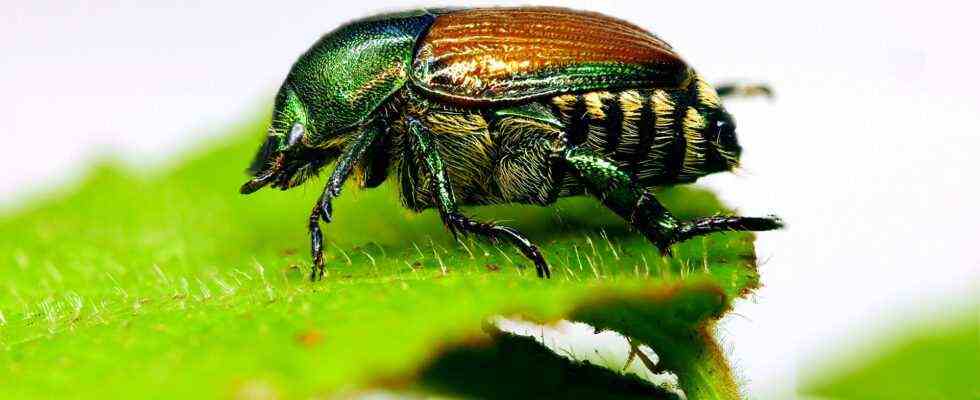Status: 23.11.2021 7:14 p.m.
Popillia japonica is only about one centimeter long, but it can cause enormous damage in agriculture. That’s why the pretty Japanese beetle is not a popular guest – one has now been caught in Baden-Württemberg.
For the first time a Japanese beetle has been caught in Germany. The male was discovered at the beginning of November in a so-called pheromone trap near the Freiburg freight yard.
According to the Freiburg regional council, it was already dead. But it must have been alive to get caught in the trap.
Appetite for fruit trees, corn and grapevines
The discovery of the pretty beetle is bad news for agriculture. According to the Agricultural Technology Center (LTZ) Augustenberg, Japanese beetles (Popillia japonica) can cause severe damage, especially to fruit trees, strawberries, beans, maize, vines, roses and many other shrub and tree species. The grubs – i.e. the larvae – in turn feed mainly on grass roots and could destroy entire lawns, meadows and pastures en masse.
The official phytosanitary service will monitor the location and other risky locations such as freight yards and truck parking spaces more closely when the flight time begins in May next year, announced the regional council spokesman.
One centimeter long, pronounced pronotum
In mid-July, a male beetle got caught in a pheromone trap near the Basel freight station. German experts then called on the public to be vigilant. Citizens reported hundreds of suspected cases to the LTZ in Karlsruhe. Often it was about other animals, but there was also a dead specimen of the Japanese beetle in Baden-Württemberg.
According to the LTZ, adult Japanese beetles are around one centimeter tall and look similar to domestic garden, May or June beetles. The Japanese beetle, however, has five white tufts of hair on each side of the abdomen and two at the end of the body. The pronotum has a noticeably green-metallic shimmer.
A “priority Union quarantine pest”
Popillia japonica is classified as a “priority Union quarantine pest” by the European Union. The Japanese beetle attacks more than 300 plants.
The beetle is native to northern China and Japan and was introduced to North America and Europe. In the EU, he has so far appeared in the Azores and in the Milan area. He has been observed in Italy since 2014. It is believed that the Japanese beetle reached Freiburg from Italy by truck.
In order to prevent the spread, the transport of plants would have to be restricted and close-meshed nets would have to be used. In addition, insecticides could curb the spread.

